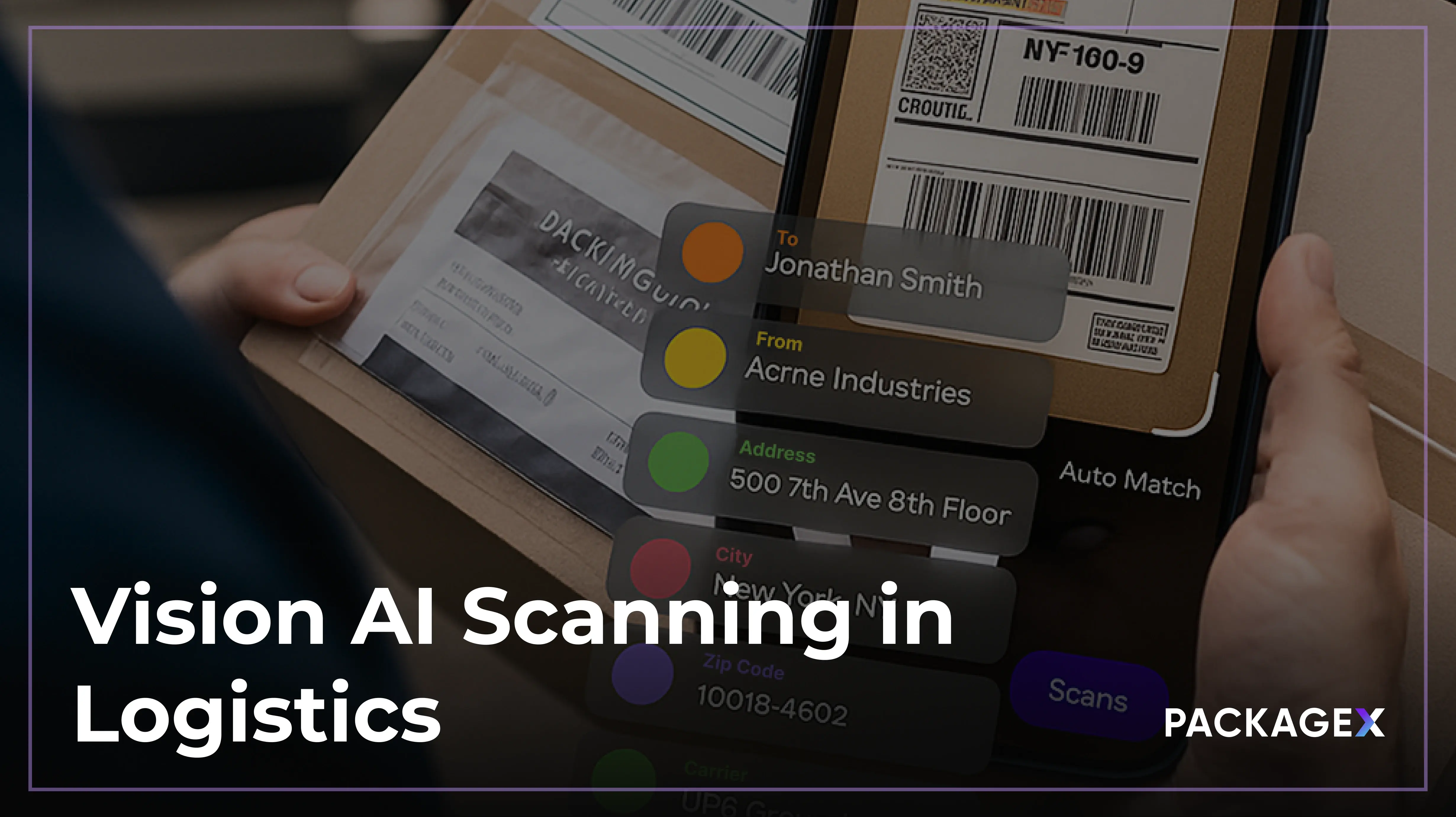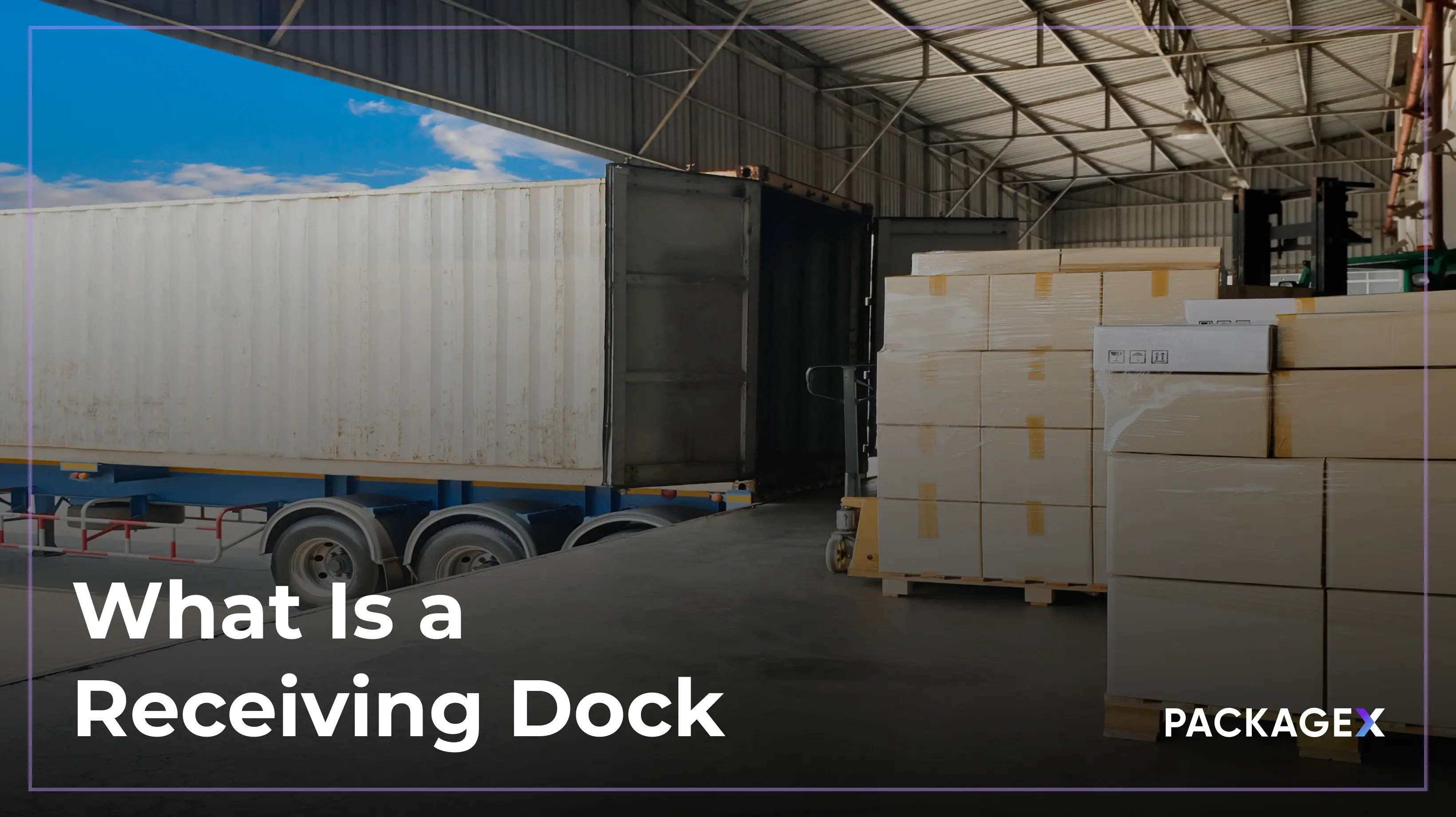In today's fast-paced world of logistics, supply chain transparency is crucial for optimizing operations, reducing costs, and improving customer satisfaction. Unfortunately, manual efforts to track inventory and manage logistics have limited visibility, leading to inefficiencies and errors.
This is where AI scanning comes into play. It offers a revolutionary solution to enhance supply chain visibility, improving efficiency in warehouse management and operations.
What is AI Scanning Software?
AI scanning software is cutting-edge logistical technology that offers a seamless bridge between tangible, often chaotic physical documentation and streamlined, efficient digital data management. It scans, identifies, and converts printed or handwritten text from documents into machine-encoded text.
This digitization is a foundational shift towards enhancing operational agility, accuracy, and speed within the supply chain.
AI Scanning with OCR Technology
Optical Character Recognition (OCR) is the sophisticated mechanism that powers AI scanning.
Imagine a warehouse bustling with activity: packages arriving, products sorted, and shipments prepared. In such a dynamic environment, traditional methods of managing data — think manual entries, physical paperwork, and barcode inventory management — can become bottlenecks prone to errors and inefficiencies.
In this scenario, AI scanning employs the OCR document scanning software to automatically extract information from documents such as invoices, packing labels, and shipping slips. The technology minimizes reliance on manual data entry, reducing human error while significantly speeding up the data capture process.
An AI document scanning software goes beyond just reading text. Integration with OCR technology allows it to understand, categorize, and process the information it captures. This means that supply chain and logistics leaders in operations, product management, building ops, and warehousing are collecting data while harvesting actionable insights in real-time.
From tracking inventory levels to monitoring order statuses, AI scanning equips decision-makers with the data needed to optimize workflows, anticipate challenges, and make informed strategic decisions.
The Challenge of Supply Chain Visibility
The complexity of modern supply chains — a vast web of suppliers, distributors, and retailers —makes transparency not just a goal but a necessity. Yet, achieving it has traditionally been an uphill battle with obstacles that hinder visibility at every turn.
Warehouse processes are an example of this challenge. These hubs of activity are critical nodes in the supply chain, where goods are received, stored, and dispatched. Despite their central role, warehouses often rely on outdated methods for managing inventory, such as barcode scanning and manual data entry.
Such approaches, while familiar, are laden with limitations. Barcode scanning, for instance, requires line-of-sight and can only capture data from visible, correctly oriented barcodes. This can lead to significant bottlenecks, especially in high-volume environments where time is of the essence.
Additionally, barcodes hold a finite amount of information, which limits the depth of data captured at each scan.
Meanwhile, manual data entry is a time-consuming, labor-intensive process vulnerable to human error. Misk eyed entries, lost paperwork, and delayed data updates can skew inventory counts, misinform order statuses, and obscure shipment details. Inaccuracies like this impact operational efficiency and can erode trust among stakeholders, as decisions are based on flawed or outdated information.
Reliance on physical documents further obscures supply chain visibility when invoices, packing slips, and shipping labels are the sole basis for tracking and managing goods.If these documents exist only in physical form, they become bottlenecks.Important data is locked away in file cabinets or stuck in transit, inaccessible to those who need it most.
This physical barrier to data access slows the decision-making process, hampers the ability to respond to changes, and creates silos of information that fragment the supply chain.
Clearly, the challenge of supply chain visibility is rooted in outdated practices and technologies.They collectively hinder the flow of information, making it difficult for logistics providers to achieve optimal operational efficiency.
As supply chains continue to grow in complexity, their management processes should follow suit.The first step is to replace paper with its electronic counterpart using OCR technology in AI scanning.
Digitizing Data with AI Scanning
As a logistics tool, AI scanning software marks the departure from traditional, labor-intensive data handling methods toward supply chain operations defined by efficiency, precision, and real-time visibility.
Its unparalleled ability to digitize a wide spectrum of data encompasses critical documents such as invoices, packing slips, shipping labels, and more. Converting these from physical to digital formats unlocks immediate, actionable insights essential to the fluid operation of supply chains.
AI scanning captures detailed information, including product descriptions, quantities, dates, and locations, with remarkable precision. Here are examples of documents you can digitize:
- Packing List
- Shipping Manifest
- Bill of Lading (BOL)
- Export/Import Custom Declaration
- Sea Waybill/Air Waybill
- Commercial Invoice
- Proforma Invoice
- Certificate of Origin
- Dock/Warehouse Receipt
This digital transformation is vital as it enables seamless data integration into existing systems, including barcode warehouse management software.
Digitizing data at the point of entry enables a more agile response to supply chain demands. This process not only streamlines operations but also lays the groundwork for leveraging advanced analytics and AI-driven insights.
AI scanning in logistics is also valuable in its ability to feed digitized data directly into other supply chain management systems. This interoperability ensures that information flows seamlessly across the ecosystem, enabling all stakeholders to access up-to-date, consistent, accurate, and timely information.
Whether a supplier checks on inventory levels or a retailer tracks a shipment, AI scanning offers a level of transparency and collaboration that was previously difficult to achieve. Even global companies like Unilever, Walmart, Siemens, Tyson Foods, Maersk, and Koch Industries employ artificial intelligence to eliminate supply chain disruptions.
How AI Scanning Improves Visibility
Documents serve as the framework for logistics operations. As items are dispatched and delivered, every transaction is authenticated through standard logistics documents. This data is universal across all logistic components, which means its digitization benefits more systems, including ERP and inventory Management Systems.
Aside from improved accuracy, real-time tracking, and the generation of more informed data insights, AI-enhanced scanning minimizes discrepancies and errors in inventory management and facilitates real-time tracking of goods.
For example, route optimization data enables efficient route planning based on:
- Location Data: Addresses, coordinates, and geographic information
- Geolocation Data: Actual traffic conditions, road closures, and weather updates
- Vehicle Characteristics: Weight, size, and capacity limitations
- Operational Factors: Depot locations, driver schedules, and service requirements
- Route Information: Distance, travel time, and cost
The depth of data insights provided by AI scanning lays the groundwork for more advanced AI use cases as well, through innovations in predictive analytics, demand forecasting, and automated decision-making.
Downstream Effect of Supply Chain Visibility
Improved visibility across the supply chain offers significant benefits to various stakeholders by enabling a more synchronized and efficient flow of information and goods. Below are examples.
Production, Manufacturing, and Inventory Management
- Reduced Delays: Anticipating potential delays in material arrival allows for proactive adjustments and prevents costly production stoppages.
- Upgraded Quality Control: Identifying errors in incoming materials ensures QC measures are accurately applied to minimize waste and rework.
- Better Inventory Scheduling: Having clear insights into current inventory levels facilitates effective supplier coordination and results in lower storage costs.
Suppliers
- Improved Collaboration: Transparency fosters a collaborative environment where joint planning and material forecasting are possible.
- Shorter Lead Times: Visibility into clients’ production schedules and inventory levels helps suppliers align production efforts with actual demand.
- Enhanced Trust: Close collaboration and clear communication create strong, long-term client-supplier business relationships.
Distributors and Wholesalers
- Refined Inventory Management: Visibility into retailer stock levels helps optimize deliveries, improve barcode inventory management strategies, and avoid overstocking.
- Lower Risk of Stock outs: Real-time information on product demand allows distributors to anticipate needs and ensure timely deliveries to retailers.
- Elevated Customer Service: Improved efficiency boosts service levels, including faster response times and accurate order fulfillment.
Retailers
- Consistent In-Stock Rates: Visibility into the supply chain means being able to better predict and manage product availability to meet consumer expectations.
- Optimized Shelf Space Management: Real-time data on product movement helps maximize space allocation and prevent dead stock.
- Enriched Customer Experience: Transparency allows retailers to provide customers with accurate information on product availability and delivery times.
Customers
- Faster Deliveries: Supply chain efficiency enables swift reactions to changes in demand, ultimately resulting in shorter waiting times for customers.
- Product Availability: Low or zero stock outs ensure a wider selection, contributing to a better shopping experience.
- Hands-On Tracking: Customers can potentially keep tabs on the progress of their orders and gain insights into the origin and journey of their purchases.
In essence, better visibility across the supply chain creates a domino effect of benefits, from the initial stages of production down to the end consumer.
The Transformational Potential of AI Scanning in Logistics
As early as 2018,Forbes Insights discovered that 65% of industry leaders acknowledge the new digital era in logistics, transportation, and supply chain due to AI and machine learning.
Integrating OCR document scanning software in AI scanning to digitize data elevates supply chain transparency and streamlines operations, bolstering accuracy and efficiency across the board.
This leap towards digital innovation is a strategic imperative for those at the helm of supply chain and logistics management. From a tangible clutter of paper-based systems to organized and accurate digital data management, it infuses the modern supply chain with unprecedented levels of visibility and operational clarity.
By enabling real-time data collection and analysis, AI scanning ensures that critical information flows uninterrupted. This empowers stakeholders across the supply chain to make informed decisions, anticipate challenges, and respond with agility to the ever-evolving market demands.
Navigate the Future of Logistics with Confidence
PackageX invites you to experience the transformative power of AI scanning firsthand through a live demo. Discover how our state-of-the-art AI scanning capabilities can revolutionize your logistics operations.
Over 100 leading brands, including Ricoh, Chicos, WeWork, and Hilton, are already leveraging our innovative solutions and benefiting from our commitment to excellence as a driving force in the future of logistics. But don't just take our word for it.Witness the impact of our groundbreaking AI scanning technology directly!
Designed to multiply workforce efficiency, slash operational costs, and seamlessly integrate with your existing systems, our software can be used to automate manual processes across the supply chain via data digitization.
Scenarios Where PackageX OCR is Commonly Used
Supply chain and logistics leaders in operations, product management, building ops, and warehousing employ our technology in these three main segments:
- Warehouses - retail, manufacturing, freight forwarders, bonded warehouses, storage
- Stores - big box retails, convenience stores, shipping services
- Campuses – campus mailrooms
- Buildings - co-working, corporate offices, residential, hotels, airports
What You Can Expect from the PackageX OCR software:
- Increased facility throughput
- Improved workforce efficiency
- Lower fulfillment and shipping costs
- Better visibility and automation throughout the supply chain and across systems
- Ability to get started immediately
- Option to connect and extend your existing tech stack
- Enhanced customer experience
Take the next step towards workflow excellence and supply chain transparency with easy-to-use apps and extend your legacy back-office systems with flexible APIs.
Request a demo with PackageX today, and see how we can help you transform your logistics operations, one scan at a time.
Interested to know more about our AI document scanning software? Download this free guide!




